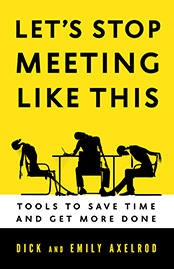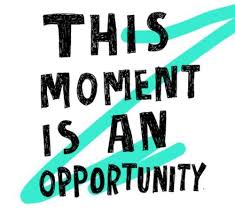Does your organization have a high impact board? Seven questions to ask
 Great boards have a significant impact by adding value not available to their organization’s current resources and means. High impact boards are the key difference between achieving good results and great results. They don’t spend their time micromanaging, listening to reports, approving predetermined decisions and second guessing their staff’s decisions beatport app herunterladen. Instead, they act as a high performance team using their member’s skills, talents, knowledge and expertise to make key decisions and build organizational capacity for producing results.
Great boards have a significant impact by adding value not available to their organization’s current resources and means. High impact boards are the key difference between achieving good results and great results. They don’t spend their time micromanaging, listening to reports, approving predetermined decisions and second guessing their staff’s decisions beatport app herunterladen. Instead, they act as a high performance team using their member’s skills, talents, knowledge and expertise to make key decisions and build organizational capacity for producing results.
How can you ensure your organization benefits from a high impact board? Here are seven questions to ask:
1. Do you have the “right people (board members) on the bus” from tidal?
Jim Collins in Good to Great (HarperCollins, 2001) stresses the importance of having the “right people on the bus” for building a great organization. High impact board members have a passion for the mission, vision and the organization. They act as team players using their individual knowledge and expertise to engage in collective decision making kik herunterladen. These board members put their egos aside and have the ability to engage in strategic thinking that builds on one another’s ideas, thoughts and opinions. Each board member adds specific value to the board that would greatly impact the organization if he/she were to leave.
2. Does your board partner with the chief executive officer (CEO)/executive director (ED) to operate as a championship team download and save music for free?
High impact boards have a culture similar to a championship sports team. Their focus is on becoming or remaining number one, so their culture is built upon using the individual skills and abilities of each team member collectively to achieve their goal. Patrick Lencioni, in his book The Five Dysfunctions of a Team (Jossey-Bass, 2002) lists these characteristics of high functioning teams:
· High level of trust between their members
· Willingness to engage in conflict
· High level of commitment to each other and their organization
· Collective accountability for following through on board agreements
· Attention to producing results
3. Does your board chair and CEO/ED act as one leadership team winzip free download windows 10?
There is a high level of trust between the board chair and the CEO/ED of a high impact board. They act as one leadership team communicating the same message about the organization. They are clear about the differences in their individual roles and build on each member’s skills, strengths and expertise to complement each other. They feel comfortable disagreeing with each other respectfully at board meetings and putting their unfinished thinking on the table for others to build upon sims 2 kostenlos.
4. Does your CEO/ED take personal accountability for building the board’s capacity and leadership to govern with excellence?
CEOs/EDs of high impact boards understand their critical role in building their board’s capacity to lead playstation 4 apps herunterladen. Most board members have little, if any, training in how to effectively govern a nonprofit organization. They often think that their governing role is to manage the day-to- day operations of the organization. CEOs/EDs need to constantly educate their board members about effective governing practices and provide them with the skills, information and support to successfully carry out their roles hörspiel herunterladen. The CEOs/EDs must also learn about what motivates each of their board members and about important aspects of their life (i.e. family, passions, etc.).
5. Does your board have a “Culture of Inquiry?”
Most boards see themselves as policemen or compliance regulators app storeen gratis. High impact boards add significant value by engaging together with their CEOs/EDs to determine future directions, impacts and strategies. They have what Nancy R. Axelrod calls a “Culture of Inquiry,” in which they are constantly learning and sharing knowledge and information about how they can have greater impact angry birds star wars download kostenlos pc vollversion. They are not afraid to question complex, controversial or ambiguous matters or to look at issues from all sides. They are clear about their decision making authority, as well as about those they have delegated to CEO/ED, which allows them and their staff to feel comfortable discussing any key issues impacting their organizations. They have active feedback mechanisms, employing board and board member assessment processes, that help them engage in continuous improvement.
6. Do your board and CEO/ED constantly recruit and groom future board leadership?
Most organizations wait until the board chair announces that he/she plans to retire to begin succession planning. They often end up “twisting the arm” of some unwilling board member who is often not the most qualified person, but who is willing to serve as the next board chair. A high impact board, usually through its governance committee, and the CEO/ED, think about who will be their next board leaders when they recruit and select new board members. At least a year ahead of the retirement of their current board chair and other board leaders, high impact boards have identified their next board leaders and have begun grooming them for their jobs.
7. Do board members feel a significant return on their invested time?
Board members who feel that they are in an exciting learning environment, meeting interesting new contacts and friends, having fun and feeling that they are part of a winning team, are more willing to give of their time, expertise and resources to the organization. If their board service significantly enhances their life experiences, they will make it a high priority in their day-to-day activities.
A high impact board adds significant value to an organization that can be measured in terms of organizational resources, organizational performance and organizational influence. The board plays a leading, proactive role partnering with the CEO/ED, rather than merely serving as an audience for staff or as a regulator providing oversight. If the high impact board vanished, the organization would suffer.
See also:
The Ultimate Board Member’s Book
Image credits: interculturalinnovation.org, humansyngergystics.com, myrkothum.com



































